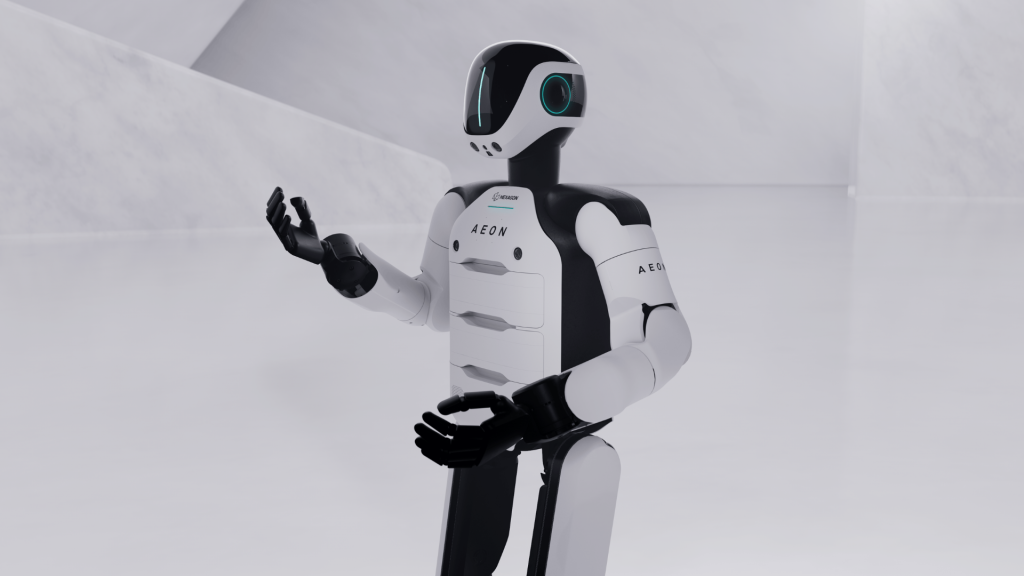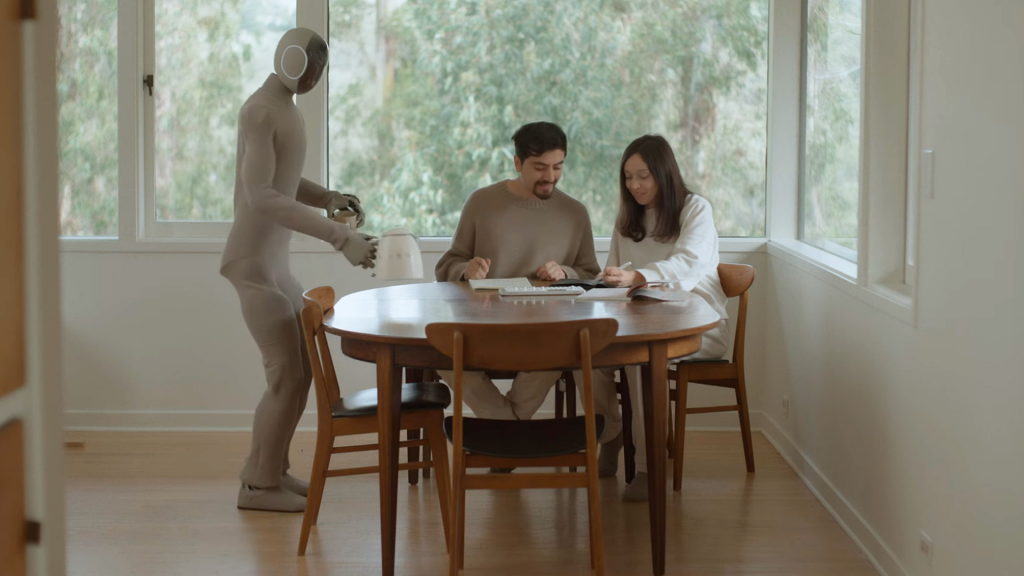Welcome to the first issue of Robot Janitors! Each week, we’ll cut through the hype and look at what’s new and noteworthy in the world of robotics. Our focus is on the real world—how these machines are starting to show up in our homes, on our streets, and in our daily lives.
Let’s dive in.
1. Humanoids Get a Brain Boost from Hexagon and NVIDIA
Hexagon, a major player in manufacturing technology, is building a new humanoid robot named AEON. They’re using NVIDIA’s powerful AI software to give it the brains it needs to operate autonomously. This means AEON is being designed from the ground up to understand and work within complex human environments.
- Why it Matters: When a company like Hexagon partners with an AI giant like NVIDIA, it signals a serious push to move humanoids out of the lab. These robots won’t just be performing one repetitive task; they’re being built to adapt and learn, which is key for working alongside people in unpredictable spaces like offices, hospitals, or retail stores.
2. Weave Robotics Brings the Maids Home
Weave Robotics just announced that they’ve started deploying their first prototype robots directly inside people’s homes. The goal for these early units is to help with common chores like doing laundry and tidying up rooms.
- Why it Matters: This is the vision of the “robot butler” taking its first real steps. Moving from a controlled lab to the chaotic environment of a real home is a massive challenge. Success here would be a huge leap toward robots that can handle the dynamic, everyday tasks that currently fill up our to-do lists.
3. 1X Teaches Its Robots to “See and Understand”
Robotics company 1X has launched a new “world model” for its humanoid robots. Think of this as an AI upgrade that allows the robot to learn by watching humans and better predict what’s going on in its surroundings.
- Why it Matters: This is the difference between a pre-programmed machine and an intelligent assistant. A robot with a world model can navigate a busy hallway or understand that a person is about to open a door without being explicitly told. This “common sense” is critical for making robots that are safe, reliable, and truly useful in the real world.
4. Wandercraft Raises $75M for AI-Powered Exoskeletons
Wandercraft, a company that builds exoskeletons to help people with mobility issues walk, just secured $75 million in new funding. They’re using AI to make their exoskeletons more intuitive and are also expanding their work into general-purpose humanoid robots.
- Why it Matters: This is a perfect example of robotics directly improving human lives by restoring fundamental abilities. The massive funding injection shows strong confidence in this technology. Furthermore, the advancements made in helping people walk can be directly applied to creating more stable and capable humanoid robots for all sorts of physical tasks.
5. Coco’s Sidewalk Robots Get an $80M Vote of Confidence
Last-mile delivery startup Coco Robotics raised $80 million. Their small, remotely-piloted robots are designed to ferry food and goods from local shops directly to your door.
- Why it Matters: This is changing the face of local delivery. These little bots could make getting a burrito from down the street faster and cheaper. As you mentioned, they are especially relevant for deliveries within large buildings, solving that tricky “last 100 feet” problem that can slow down human couriers.
6. Sunrise Robotics Makes Robots for the Rest of Us
Coming out of stealth with $8.5 million in funding, Sunrise Robotics is building a robot arm that’s easy for anyone to program. Their goal is to let workers on a factory or workshop floor “teach” the robot a new task quickly, without needing to be a robotics engineer.
- Why it Matters: This makes automation accessible. Imagine a building’s maintenance shop needing a specific replacement part. Instead of a long ordering process, a janitor or technician could use a Sunrise-like robot to manufacture it on-site. It puts powerful tools into the hands of the people doing the work.
That’s it for this week. The thread connecting all these updates is clear: robots are getting smarter, more adaptable, and closer to our daily lives than ever before.





